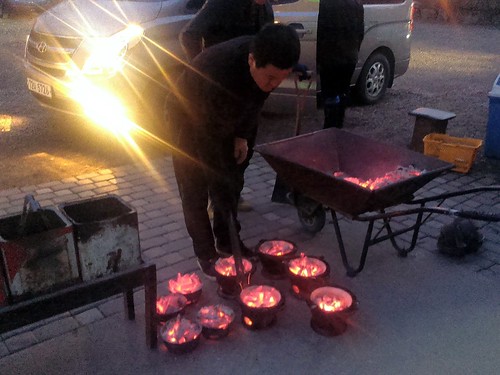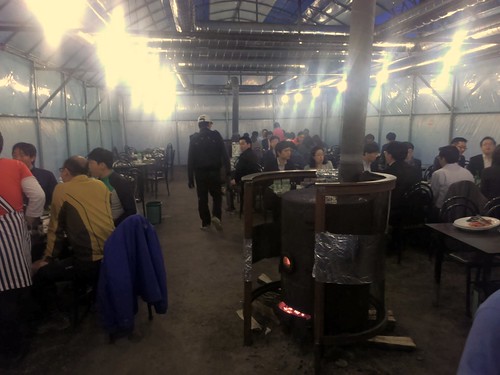If you'd like to see daily images and information on Ireland's incredible heritage sites please consider following us on Facebook, Twitter or Google+ One of Ireland’s true hidden gems, Kilcooley Abbey is a simply wonderful place to visit. It is located in the beautiful Sliabh-Ardagh region of Tipperary, and is located within the walls of the Kilcooley Estate, an impressive Georgian house with over a thousand acres of land.
Kilcooley Abbey was founded in 1182 after a grant of land to the Cistercians by Donal Mor O'Briain, King of Munster. It was the ‘daughter house’ of Jerpoint Abbey in County Kilkenny, and Kilcooley is without a doubt one of Ireland’s finest Cistercian abbeys and is a wonderful example of Gothic architecture.
The Cistercian Order was founded by St. Bernard of Clairvaux in Burgundy, Central France in 1098. St. Bernard believed that the other monastic orders had become dissolute and undisciplined, and he founded the Cistercians as an austere and hard-working order who focused on a life of prayer. The Cistercians were initially extremely successful in Ireland, and spread rapidly from their first foundation at
Mellifont in County Louth.
I haven’t been able to find much on the next couple of centuries of Kilcooley’s history, but the Abbey is recorded as being attacked and burned in 1418 and later again it was recorded as being almost completely levelled by an armed force of men in 1444. After this attack, the Ormond Butlers instigated a programme of reconstruction which removed the nave aisles and added a new north transept and tower. Most of the stunning sculpture around the Abbey dates to this period of reconstruction and renovation under the patronage of the powerful Ormond Butlers. The works were carried out under the eye of the Abbot, Philip O’Mulwanayn, and his graveslab dating to 1463 shows him holding his bishop’s crozier and book of prayer. He appears to have been part of a dynasty, as his son William, and his ancestors after him, were abbots of Kilcooley until the mid sixteenth century.
The Butlers were rewarded for their patronage, by having their tombs placed inside the sacred areas of Kilcooley. The most stunning of which is the incredible tomb of Pierce Fitz Oge Butler. The tomb likely dates to 1526, and depicts Pierce Butler in his armour. At his feet a small dog indicates his faithfulness and loyalty, and ten of the twelve apostles are depicted below (from left to right) Saint Peter holding the keys to Heaven, Saint Andrew, Saint James (major), Saint John, Saint Thomas, Saint James (minor), Saint Philip, Saint Bartholomew, Saint Simon and Saint Matthew. Unusually, we know who actually created the tomb, as the name of the sculptor Rory O’Tunney (
Roricus O Tuyne) is clearly marked.
 |
| The Sedilla |
 |
| The wonderful screen wall |
 |
| The beautiful eastern window |
 |
| Medieval tomb effigys, with that of Abbot Phillip O’Mulwanayn highlighted |
It is almost impossible to do justice in this short blog article to the sheer wealth of incredible sculpture at Kilcooley, for example the beautifully ornate Gothic east window is so delicately carved, with the stone formed to look almost like flames or delicate foliage. The ‘abbots chair’ (or
sedilla) is also incredible, and is matched on the other side by another, slightly plainer example perhaps for a prior. As far as I am aware I believe them to be the only examples in Irish Cistercian monasteries.
The screen wall separating the southern transept from the sacristy is also elaborately decorated with a number of scenes including Saint Christopher crossing a river with the infant Jesus, the crucifixion with Mary and Saint John on either side, a pelican feeding its young within a chalice, a charming mermaid with a comb and mirror, and the Butler coat-of-arms.
 |
| The cloister area |
Beyond this area you can enter the cloister. The cloisters was an important feature of Cistercian monasteries, and were always located to the south. They were usually a covered walkway enclosing an open square area. Very little remains of any covered walkway at Kilcooley, and it appears that perhaps the cloisters were converted to a courtyard in its later history. You can see other more domestic quarters at Kilcooley though some of these are kept locked and inaccessible to the public for health and safety reasons. Outside of the abbey you can see a small circular tower, this was a dovecote where the monks kept pigeons. The pigeons were a handy source of protein and the pigeon dung also made good fertilizer, very little was wasted in a medieval monastery! In its heyday, the Abbey would have also had other agricultural buildings like mills and a large lay population to work the land.
 |
| Stairway to domestic quarters |
Kilcooley Abbey ceased to be a place of monks and contemplation when it was surrendered during the Dissolution of the Monasteries in 1540. However the lands were granted directly to the Butlers, and it is recorded that they allowed monks to remain at Kilcooley, until they sold it to Sir Jerome Alexander in 1636. After the Catholic Confederacy rebellion in 1641, Cistercian monks returned to Kilcooley, until they were finally removed from the site by Cromwell’s forces in 1650. Ten years later the Alexander family regained the Abbey and when Elizabeth Alexander married Sir William Barker of Essex in 1676, the Abbey was converted into being a domestic house.
In 1790 the grand Kilcooley House was built and replaced the abbey as the main residence. Today the site is a National Monument, and under the care of the Office of Public Works. The site is gated, but the gate is often left unlocked during the day to allow visitors to enjoy one of the finest heritage sites in the country.
Kilcooley is located around 20km east of Thurles in County Tipperary at co-ordinates 52.67206 -7.5644, off the R690. It’s just east of Gortnahoe. When you go up the drive of Kilcooley Estate you’ll see signs for the Abbey, but before you get there be sure to park your car at the relatively modern Church of Ireland and take a moment to see the quite remarkable 18/19th century pyramid shaped burial monument of the Barker family. It’s well worth a look! The abbey is just further along the track, less than a five minute walk from there.
Kilcooley is one of the sites on our
free to download audioguide
The Derrynaflan Trail, that leads you around the beautiful Slieveardagh Region of County Tipperary and helps you to explore the wonderful ancient monasteries and churches that you will encounter along the way. Download directly to your smartphone or tablet with our free audiovisual app (for Apple and Android), please see
here for a preview.
Alternatively you can download directly onto your desktop or laptop as a free MP3 album, please visit
here to download your free copy.
 |
| The dovecote |
The fantastic
Historic Graves group have also visited Kilcooley and have recorded the custodian of the Abbey eloquently describing the history and features of this remarkable place. You can find this
here If you have a suggestion for a site I’d love to hear it, please let us know by dropping us a line at info@abartaaudioguides.com or on
Facebook,
Twitter or
Google+, where you can keep up with daily pictures and information about wonderful heritage sites in Ireland.
If you’d like to support us please consider downloading an audioguide from my website
www.abartaaudioguides.com. They are designed to be fun and informative whether you are at the site or from the comfort of your own home. Try our audioguide to
Viking and Medieval Dublin, or if you’re in Tipperary try our guides to the
Rock of Cashel or the formidable
Cahir Castle. Available for just €1.99 from
www.abartaaudioguides.com |
| The unusual pyramid monument of the Barker family |
 |
The impressive Kilcooley Estate, dates to the 18th Century and available for €2.1m
|







































